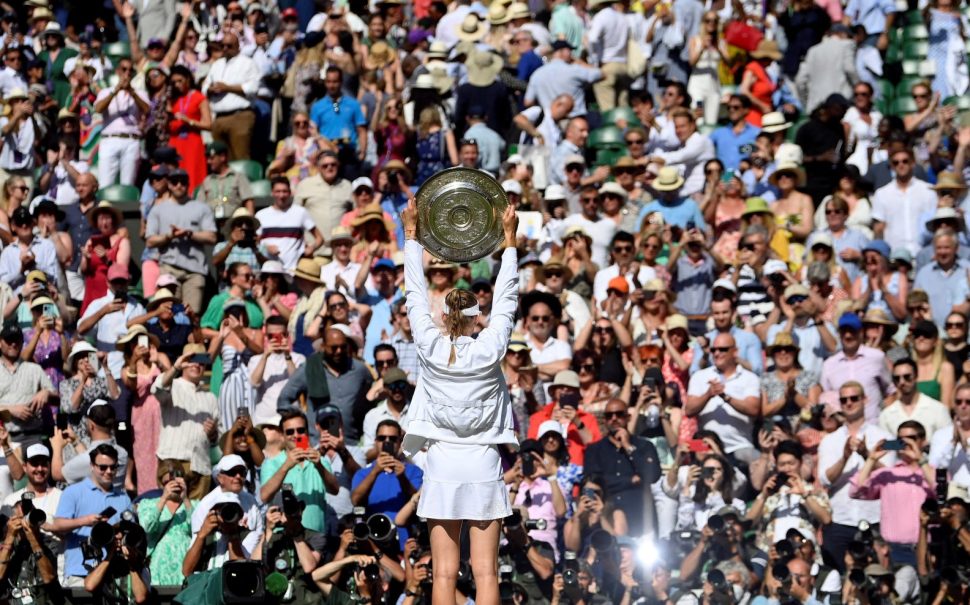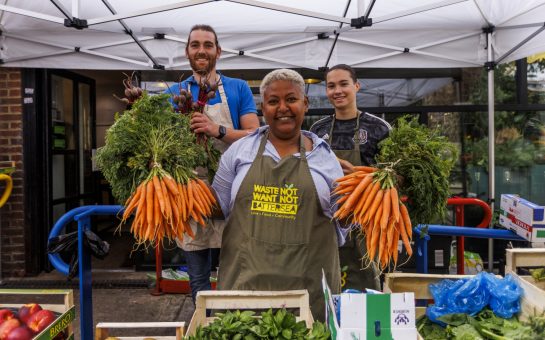After two weeks of Pimms, strawberries and cream, sun, rain and high drama on and off court, Wimbledon came to a close for another year on Sunday.
With no ranking points and a significant chunk of Russian and Belarusian players absent, this was a tournament like no other held simply for the glory of the sport.
Yet amid all the controversy that brewed before the tournament – and, for many reasons, during it – it all felt rather familiar; fans back in their thousands, tension, and plenty of great tennis.
And it ended with Elena Rybakina and Novak Djokovic, undoubtedly the two best players of the tournament, winning titles.
Like always there were plenty of talking points – here are seven things that stood out at SW19 this year.
Boom in British tennis
There were positive signs throughout the grass court season for British tennis and more history was made at SW19.For the first time since 1984, ten Brits made the second round of a Grand Slam, with the likes of Ryan Peniston, Alastair Gray, Liam Broady, Katie Boulter and Heather Watson all embarking on career-best runs.
Coupled with Neal Skupski’s mixed doubles title and wheelchair finals for Alfie Hewett, Gordon Reid and Andy Lapthorne there is a real sense of positivity around British tennis right now.
Norrie shows staying power
Cameron Norrie may not have been a household name before the tournament began but it is fair to say he’s won countless fans this past fortnight.
The 26-year-old had never made it to the fourth round at a Slam before but made it all the way to the semi-final, the high-point of an 18-month stretch that has seen him win four career titles.
Norrie is looking more measured and comfortable in the upper echelons of the sport with each tournament he plays, and there is no reason why he can’t be a significant force on the ATP Tour.
Women’s game still unpredictable
Iga Swiatek may have entered the tournament as the biggest of big favourites, but her third round loss to Alize Cornet demonstrated the women’s game is as unpredictable as ever.
Other seeds such as Anett Kontaveit, Karolina Pliskova and Maria Sakkari failed to make the second week, while Simona Halep was only semi-finalist to have reached that stage of a Slam before.
Swiatek may still be well clear at the top of rankings, but this incredibly open and unpredictable era of women’s tennis shows no sign of ending quite yet.
Djokovic and Nadal still clear
While the women’s game is open, in the current climate Djokovic, now a seven-time champion here, and Nadal are still well clear of the rest in the men’s game.
Nadal’s abdominal injury may have been the only thing that prevented a 60th meeting between the two, having looked incredibly tough to beat up until he withdrew from his semi-final against eventual runner-up Nick Kyrgios.
There are an array of ‘Next Gen’ contenders and doubts, for varying reasons, about when Djokovic and Nadal will play next, but if they’re in the draw you’d be brave to bet against them.
Rybakina demonstrates potential
Rybakina’s potential has been recognised for a while but a run to her first Grand Slam title is well and truly a game changer for the Kazakh.
The 23-year-old’s rise was thwarted by covid, illness and injury but she looked unstoppable at times this fortnight, dropping just two sets on her way to the title.
With a huge serve and devastating power, she has the game to win several more Slams and if she can stay as cool, calm and collected as she has done, it would be difficult to bet against her.
Final set tie-breaks work
The decision to introduce a ten-point tie-break in the final set of Grand Slam matches garnered a mixed reaction originally, though we’ve seen just how thrilling they can be.
Fans watched in suspense as Harmony Tan edged out Serena Williams and Nadal got the better of Taylor Fritz, while few will forget the incredible end to the mixed doubles match between Jonny O’Mara and Alicia Barnett and Jamie Murray and Venus Williams – O’Mara and Barnett prevailing 18-16 in the breaker.
There have been many innovations in the sport that have not worked, but this is one that should stay.
Game growing
Tennis sells itself as a global sport but at times it feels very closed off, yet there were some notable milestones this year that show the game is starting to spread out of its traditional circles.
The women’s final between Rybakina and Ons Jabeur was the first Grand Slam final in the Open Era not to feature a European, American or Australian, with Jabeur the first African woman to reach a Major final.
Angella Okutoyi became the first Kenyan to win a Slam with her Girls’ doubles title, while Cristian Garin became the first Chilean in 13 years to reach a Grand Slam quarter-final.
Though the dominance of traditional tennis nations is unlikely to end quite yet, there is a sense of some change.
For the latest action on the British summer grass court season, check out the LTA Website





